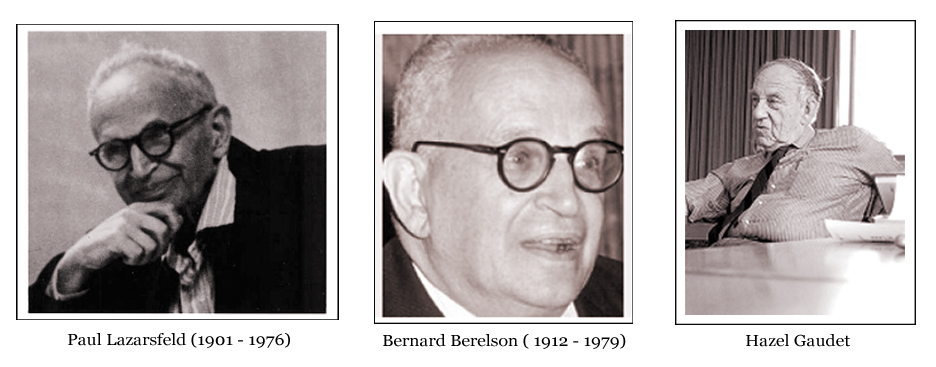The two-step flow theory of communication demonstrates that messages from the mass media travel through an intermediary layer, they have no effect on the majority. Because the information flows through two processes, it is known as the two-step hypothesis. Opinion leaders are well-informed and powerful figures in their own social circles, and the initial step will probably involve reaching out to them through the media. The second step involves the ‘leaders’ viewing the content and then contributing their own thoughts. It will then be disseminated to the general public, also referred to as “opinion followers.” The two-step approach highlights that the initial message from the media is less effective than the personal influence of a reliable source in influencing the attitudes and behaviors of the general public.

Established by Paul Lazarsfeld, Bernard Berelson, and Hazel Gaudet in 1944 and later expanded upon by Elihu Katz and Lazarsfeld in 1955, the two-step flow theory continues to be a fundamental component in comprehending contemporary communication, especially the function of social influence through the establishment of the ‘limited effects paradigm’. By demonstrating that a trustworthy individual’s personal influence is more convincing than a mass media message, it calls into question the notion of direct media impact. This is evident in contemporary influencer marketing, when opinion leaders are social media stars. Instead of depending solely on advertising, many brands or businesses invest in influencers who absorb and analyze the brand’s messaging before delivering it to their audience in the form of tailored suggestions. The beauty industry, for instance, frequently uses social media influencers to promote their products by giving them free samples or even partnering with them. This helps brands increase sales over advertisements, which directly supports the theory’s central finding that people trust people that they know. This was clarified by Lazarsfeld and Katz in their 1955 book, Personal Influence. They pointed out that in addition to the message itself, mass communication relies on interpersonal relationships and personal influence.

Lazarsfeld and Katz’s Two-Step Flow Theory is still very much in use today as the cornerstone of contemporary influence tactics. The idea effectively established the “limited effects paradigm” by reorienting attention from the direct power of mass media to the crucial function of interpersonal contact and reliable opinion leaders. Influencer marketing and focused political campaigns in the digital era serve as excellent examples of this realization, as the success of a message depends not only on its dissemination but also on the individual’s support and social media mediation. The hypothesis essentially demonstrates that, despite the abundance of media in our environment, interpersonal conversation remains the most effective and ultimate stage of communication.
References:
Jessslater. (2021, September 10). To influence or to be influenced: how the two-step flow theory affects your news consumption. Medium. https://medium.com/@jessslater14/to-influence-or-to-be-influenced-how-the-two-step-flow-theory-affects-your-news-consumption-86ecac7970fb
(Jessslater, 2021)
Two-Step Flow Theory Of Media Communication. (2025, September 18). Simply Psychology. https://www.simplypsychology.org/two-step-flow-theory-of-communication.html
(Two-Step Flow Theory of Media Communication, 2025)
Two Step Flow Model | Media | AQA A-Level Sociology. (2023). Tutor2u.net. https://www.tutor2u.net/sociology/reference/two-step-flow-model-media-aqa-a-level-sociology?srsltid=AfmBOoqChsqmAi_yZLOG3gUTdTNT4dxA9xNX8vprY37jj3IaxHVbHFap
(Two Step Flow Model | Media | AQA A-Level Sociology, 2023)

